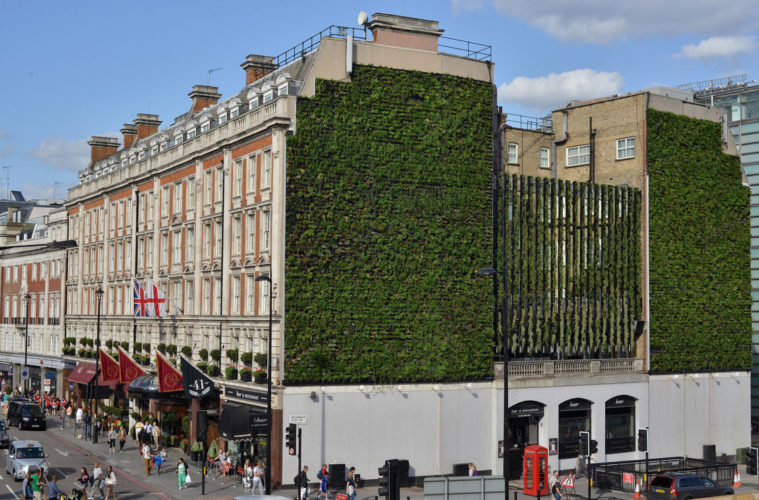London is full of surprises and its host of charming secret gardens is just one of them
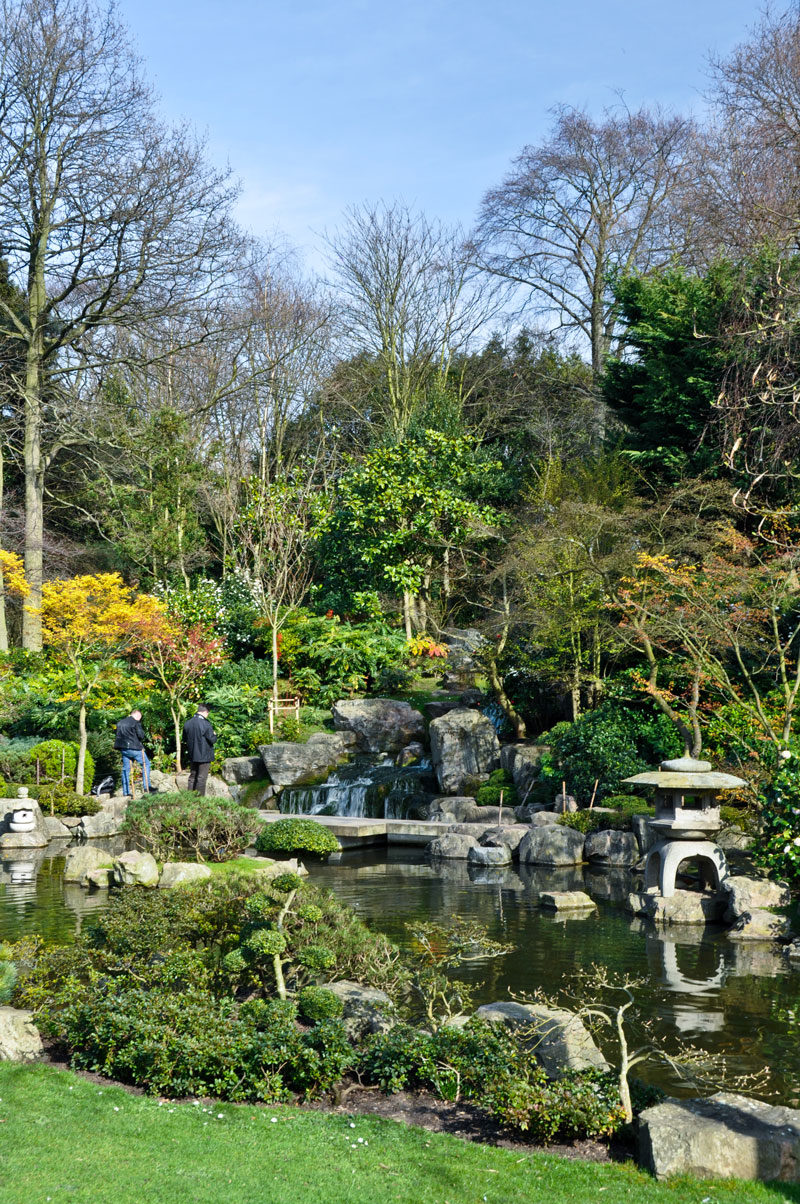
Japanese Garden in Holland Park
The United Kingdom is revered for its gardens and parks, and London is home to some of the world’s best. There’s the formal layout of Regent’s Park; the meadowlands and lakes of Hyde Park; and Kew Gardens, which is justifiably one of the world’s finest botanical gardens. But what about the others? What about those green spaces on Google Maps that don’t have ticket prices attached, or where a creaking iron gate reveals a secret garden known only by locals. There are dozens of these secret corners to explore in the city – the Japanese Garden in Holland Park, the Mount Street Gardens in Mayfair, the pergola gardens to the west of Hampstead Heath, the rambling forests and haunting tombstones of Highgate Cemetery, the quirky outdoor art in Islington’s Duncan Terrace Gardens and the lush Phoenix Garden in St. Giles.

Mount Street Gardens
Vertical garden, Rubens at The Palace Hotel
The Rubens Hotel, overlooking the Royal Mews at Buckingham Palace, is known for its stylish accommodation and elegant afternoon teas. But it’s also the home of the largest living wall in London. This astounding vertical garden, which consists of more than 10 000 plants, is a vital green lung in bustling Victoria. Planted as a biodiversity wall to attract birds and bees, everything from flowering bulbs to wild strawberries is planted here. Two-thirds of the wall is evergreen and the plants were selected to provide a flush of colour throughout the year.
Inner Temple Gardens
Start walking at the Thames-side statue of the Celtic queen, Boadicea. From here, London stretches out towards the east. The London Eye turns lazily round, there’s the chimney of The Tate Modern and The Shard pierces the skyline as a symbol of modern, connected London. If you pass the Temple tube station and turn left, there’s a gate in the iron railings that leads towards the buildings of the Inns of Court. This is the heart of the British justice system and it’s not unusual to see wigged and robed barristers wandering the flagstone pathways. There has been a garden here since Medieval times and the modern-day layout reflects its varied history. Wander through the 300-hundred-year-old gates to the gardens where ancient orchards are remembered in the variety of fruit trees, while the Long Border commemorates the Wars of the Roses. The garden has a rather illustrious history in horticultural circles too. In the 1800s it introduced an annual show of chrysanthemums, which later became the Royal Horticultural Society’s Spring Flower Show. By 1911, the show had become so popular it was moved to a site in West London. And so, the Chelsea Flower Show was born.
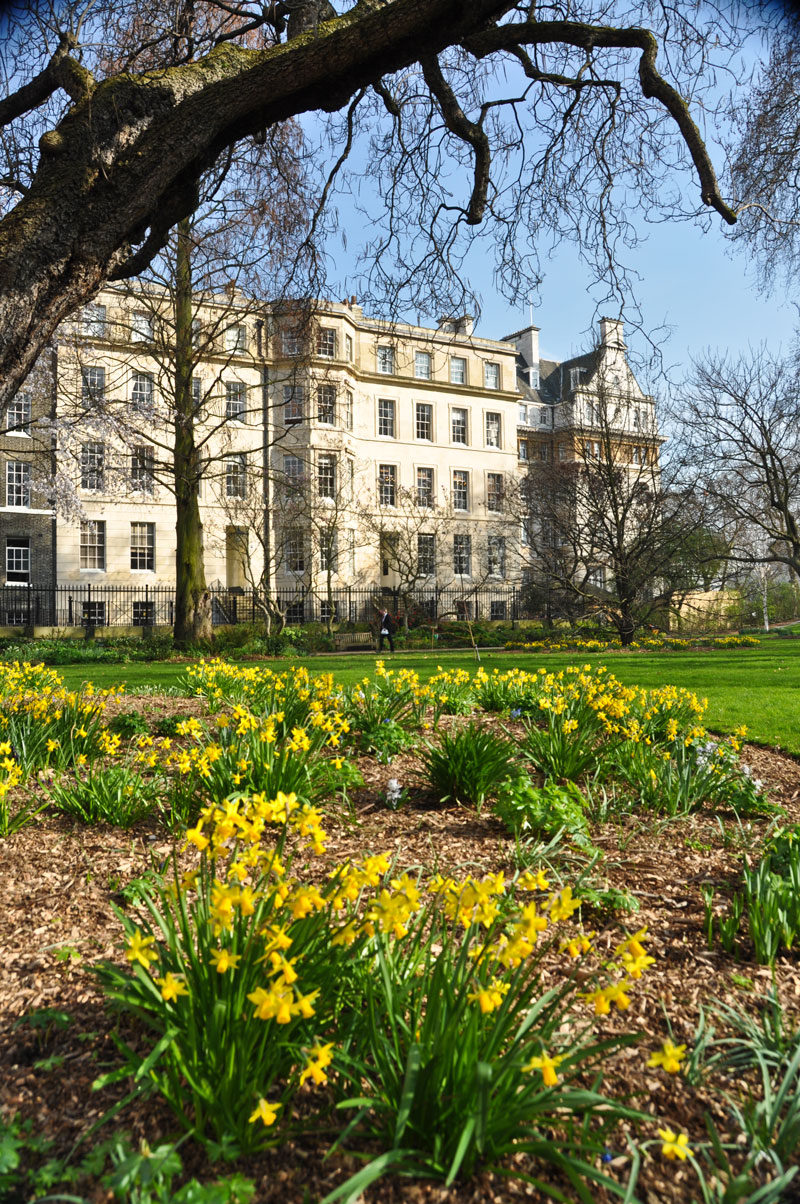
Inner Temple Gardens
St Dunstan in the East
Head to Monument tube station and join the hub of visitors at the stone column designed by Sir Christopher Wren to mark – in height – the 61,6m distance to the bakery where the devastating Great Fire of London in 1666 is said to have started. Then go past Pudding Lane to the ruins of a church known as St. Dunstan in the East. The church was restored by Sir Christopher Wren after the Great Fire. However, it was no match for the German bombs in World War II, and remained a shell until it was transformed into a garden in 1970. Today it’s a quiet retreat in the bustling eastern reaches of the city. Ivy crawls across Gothic arched windows and trees grow respectfully in what was once the nave of the church.
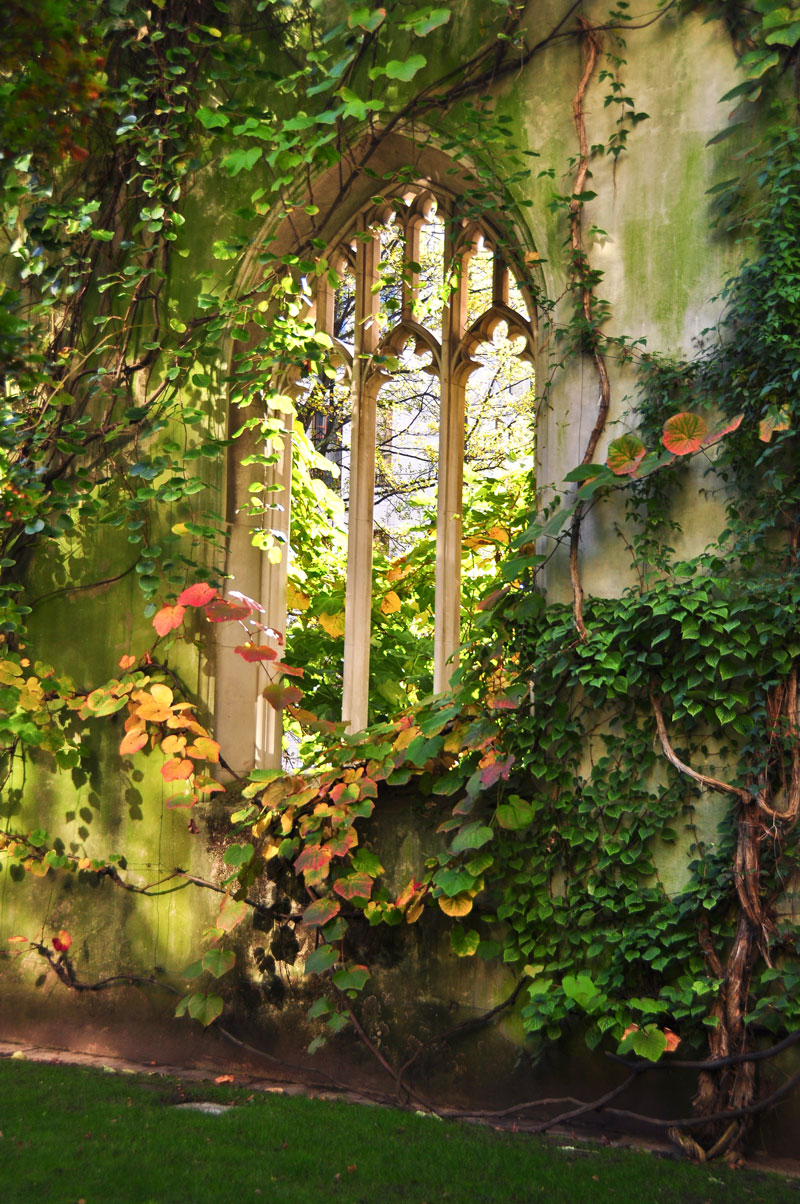
St. Dunstan in the East
Postman’s Park and St George’s Gardens
If you walk up St. Martin’s Le-Grand and through the gate at Postman’s Park, you’ll find large specimens of Japanese banana and dove trees. Established in 1880, the park is named in honour of the humble postmen of the nearby General Post Office who would rest their weary feet on shady benches. After resting yours, go North to Bloomsbury where the terraced rows of high-priced houses hide one of the city’s loveliest corners.
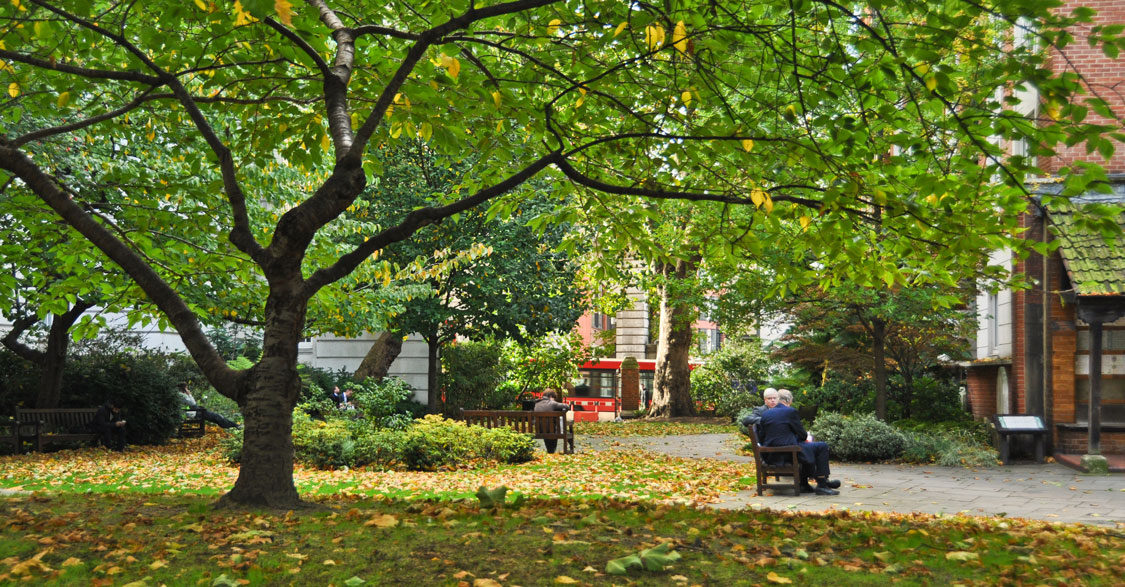
Postman’s Park
St. George’s Gardens was established 300 years ago, and like many of London’s green spaces, began life as a burial ground for two nearby churches. It didn’t take long before the graveyard was full and urban London had overrun this quiet corner. The dilapidated churchyard was transformed into public gardens, creating ‘open-air sitting rooms for the poor’, as British housing reformer Octavia Hill once put it. With the exchange rate hovering at R18 to the pound, South Africans qualify rather well, and this sanctuary of mossy tombstones and spring daffodils is a fine place to enjoy a morning coffee and soak up the herbaceous history.
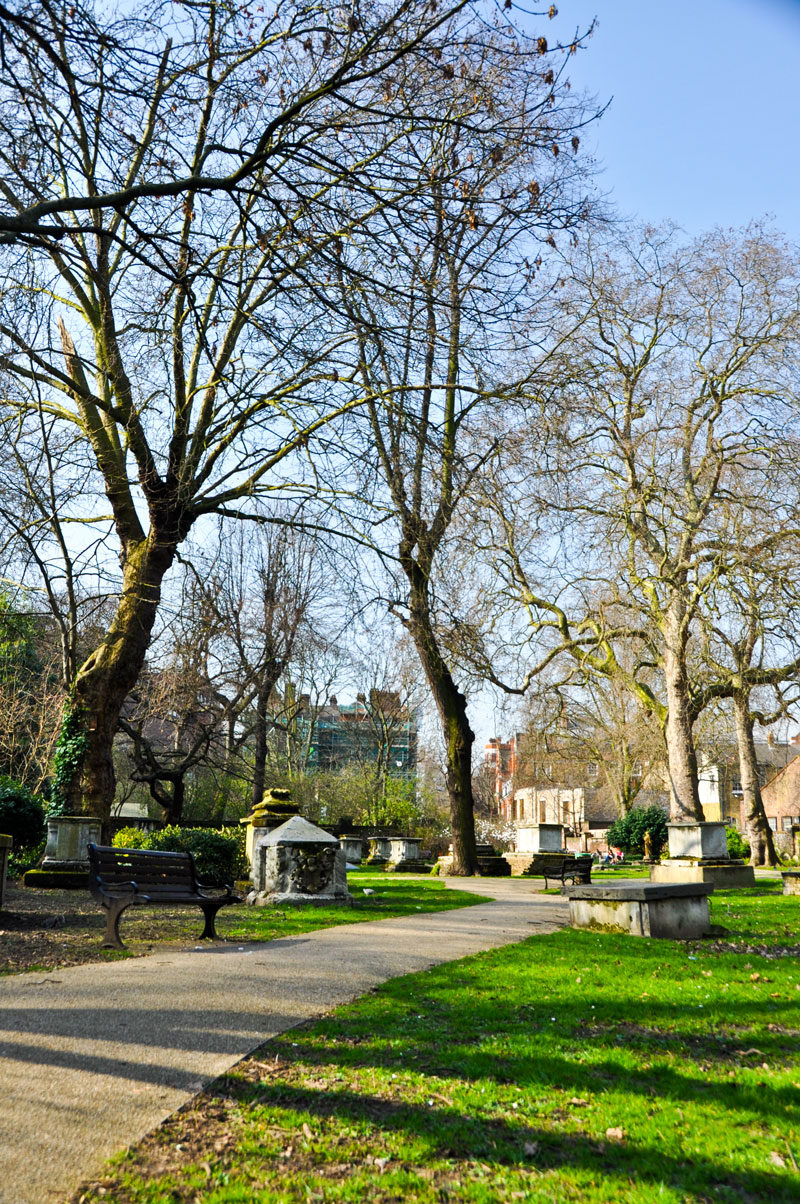
St. George’s Gardens
RICHARD’S TRAVEL TIPS
RESPECT private gardens; the ones in private squares are for residents only.
USE A MAP on your phone to easily find your way from one garden to the next. You’ll need good walking shoes.
STAY CENTRAL so that long commutes on the tube won’t eat into your sightseeing time.
PLANNING YOUR TRIP
GETTING THERE: British Airways flies daily to Heathrow from Johannesburg and Cape Town. Visit ba.com or call 011 441 8600.
VISAS: South African passport holders require a visa to enter the United Kingdom. Visit visa4uk.fco.gov.uk for online applications.
WHERE TO STAY: Rubens at the Palace Hotel is an elegant option just minutes from Buckingham Palace and close to public transport. Serviced apartments are offered too. Visit rubenshotel.com.
DO YOUR HOMEWORK: At gardenvisit.com, you can research various garden tours around the world. There are some wonderful ones on offer in the UK.

